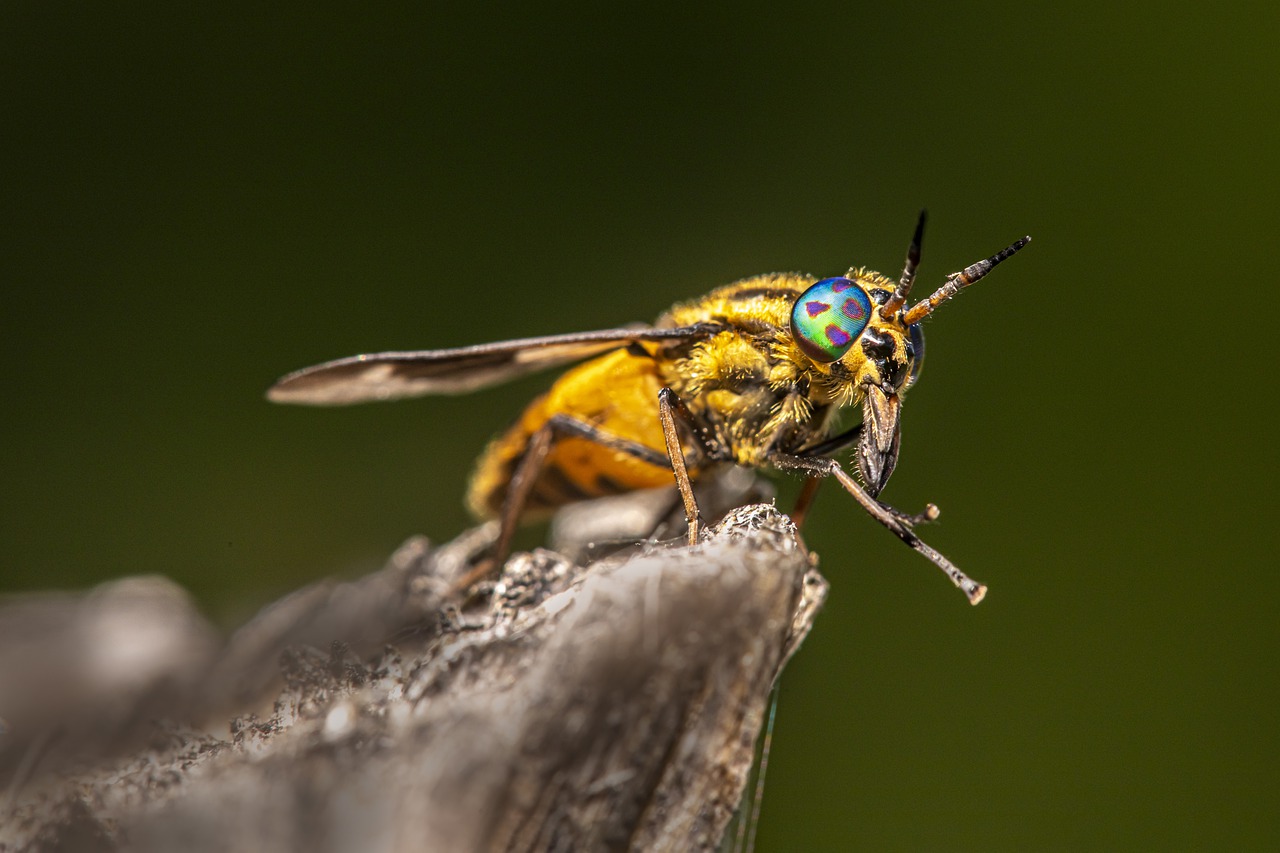Chrysops caecutiens is a species of deer fly belonging to the Tabanidae family. Deer flies, including Chrysops species, are known for their painful bites, which they inflict on various animals, including humans. Here are some key features and characteristics of Chrysops caecutiens:
- Distribution: Chrysops caecutiens is found in Europe, particularly in regions with suitable habitats such as woodlands, grasslands, and wetlands. It may also occur in parts of Asia.
- Appearance: Adult Chrysops caecutiens flies are typically dark in color, with a stout body and large compound eyes. They have transparent wings with characteristic dark bands or patterns.
- Lifecycle: Like other members of the Tabanidae family, Chrysops caecutiens undergoes complete metamorphosis, with egg, larval, pupal, and adult stages. The larvae develop in moist soil or decaying organic matter, where they feed on organic debris and small organisms.
- Behavior: Chrysops caecutiens, like other deer flies, is known for its painful bite, which it uses to obtain blood meals from hosts, including mammals such as deer, cattle, horses, and sometimes humans. Female deer flies require blood meals to develop eggs, while males primarily feed on nectar.
- Ecological Role: While deer flies are often considered pests due to their biting behavior, they also play a role in ecosystems as pollinators and as prey for various predators.
- Management: To reduce the nuisance and potential health risks associated with deer flies, various methods can be employed, including the use of insect repellents, wearing protective clothing, and implementing habitat management practices to reduce breeding sites.
Overall, Chrysops caecutiens is one of many species of deer flies found in Europe and plays a role in the local ecosystems, albeit sometimes as a nuisance to humans and other animals due to its biting behavior.
Views: 22
Subscribe to the newsletter:
